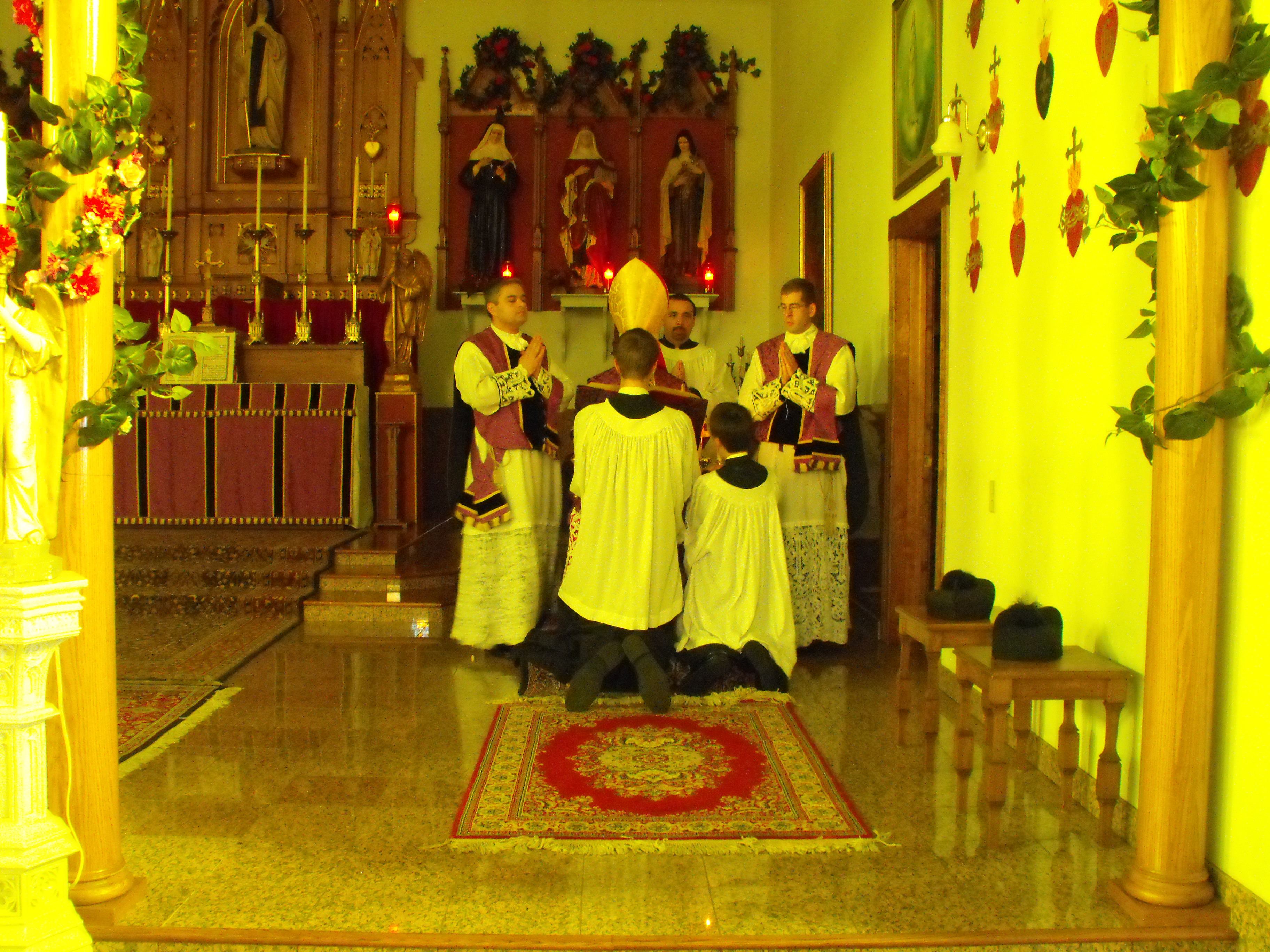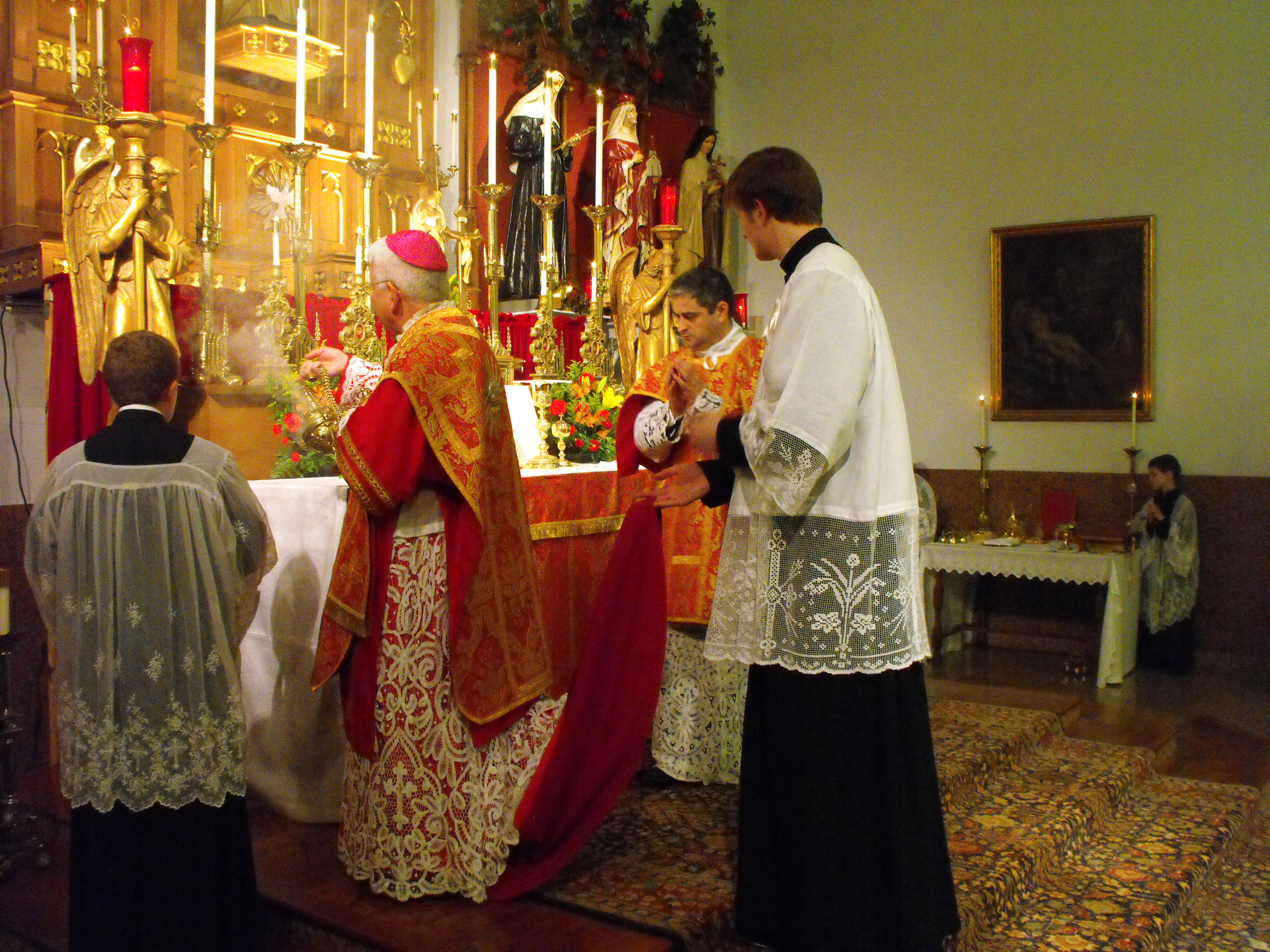Some weeks ago I was meandering through a bookshop,
trying to kill excess time before a distant appointment, when I happened upon a
special edition of Life magazine
called Blessed Art Thou Amongst Women.
Pompeo Batoni’s Virgin of the
Annunciation graced the cover of this well illustrated little volume on the
Blessed Mother. A Catholic, Robert Sullivan, wrote the long essay inside, an
essay which aspires toward a broad perspective on Mary that befits modern
journalism, an overview on what she means to people rather than who she is. One
particular line caught my view while thumbing through the line; I cannot recall
the phrase precisely, but it effectively surmised that the reactionary Reformers
of the 16th century preferred the narrowly known Mary of the Bible
over the experientially known Mary of medieval Catholic devotions and miracles.
And with this the influence of the Reformers’ sola scriptura doctrine crystalizes in modern times.
The Reformation broke out at the end of the Middle
Ages, an epoch characterized by an extroverted, almost militant piety which
asserted that Christ, the Saints, and holy things had a normal, continual
presence in the world and which, by the faithful’s cooperation with them in a
penitential spirit, the Church could obtain favor from heaven and the remission
of sins. Or say contemporary textbooks. Factually, all of this is true, if
amiss in characterizing the spirit of the Middle Ages, the apex of the Latin
liturgy, monasticism, pilgrimage, papal power, and also administrative
corruption. Many of the virtues of the medieval period—penance, Mass,
pilgrimage—became occasions of vice for ambitious Italian and Spanish families
in the form of ready-paid indulgences, fraudulent Mass stipends for aliturgical
“dry” and votive Masses, and military actions dissimulated as holy war. It was
in this time, at the close of the medieval period, that Luther left the loo to
make his objections.
In the same bookshop I sauntered over to the religion
section and found myself thumbing through one of Diarmaid MacCulloch’s books on
the Reformation. He resolutely denies that Renaissance decadence was the condition sine qua non for the
Reformation, instead insisting that the Reformers, especially Calvin, were
returning to the orthodoxy of Chalcedon—which is convenient, because a few
councils later the Church declared the absolute orthodoxy of venerating holy
images. This is rubbish. All reform movements are inherently reactionary, at least
in cause; they handicap themselves the more they hew to their reactionary
stimuli rather than the challenges of the day. But also, reform movements look
at the current state, compare it to the past, and find the need to purify the
current day to make it like unto the past. This is fine within living memory,
but Reformation idealized an age fourteen centuries passed.
In reaction to the excesses of medieval piety and the sums
the Borgias and their imitators profited, the Reformers sought consolation in
the Scriptures and their friendly confines, where Mary says very little, the
Apostles even less, sins are pardoned without the aid of manuals for penance,
and there is no Roman Canon. The Reformers arrived at sola scriptura, paradoxically accompanied by two or four other solae, depending on one’s numbering. Within
these Scriptures, they taught, all Truth resides for the profit, belief, and
salvation of the believer. The reduction of the Truth to what was recounted in
a book may seem narrower and purer to modern academics skeptical of medieval
piety, but at the time it must have carried an elitist association on par with
owning a Rolls-Royce in modern times.
A Rolls-Royce and a Gutenberg-era book have much in
common: new both cost as much as the average person made in several years, both
took quite a while to produce, both were decorated with the finest materials,
and both required something special to wield (in modern times a chauffeur and
in older times literacy). One might retort that the non-nobles and non-clergy
who possessed academic and functional literacy could read the Scriptures at the
local cathedral library, but then again one can rent a Roller for one’s special
occasions.
The diffusion of literacy and cheapness of printing
after Gutenberg’s press made its way to factories made the Scriptures more
accessible to people, who would now understand the Bible in a different way
than people had in the old religion. A Catholic would readily admit the
profitability of reading the Scriptures, that they are written under Divine
inspiration and contain no error of doctrine, and that they are integral to the
faithful’s religion; why else would the Church read them at the Office and
Eucharist? Where the Church comes full stop is in asserting that the Scriptures
are sufficient for all truth and belief. For example, what if someone wants to better
their Christian virtue? They can and should read the Gospels to meditate on the
miracles and teachings of Christ; they can take some inspiration from the Acts
of the Apostles, but little more; the rest of the New Testament has
exhortations to virtue proper to the problems of the day, which can often apply
to us, but they were not absolutely written for our specific challenges. Saint Luke
is aware that he is writing Scripture, Paul is not. Without the examples of the
post-Apostolic saints and the various kinds of devotion (pilgrimages, types of
penance, parish customs and charities) that emerged over time, one is left with
the need to personalize the contents of Scripture to one’s own life rather than
take the Evangelists’ plain words as they are meant to be heard.
While popular piety was time-travelling into the
Apostolic and Old Testament age, like characters from the ‘80s B film Time Bandits, the scholar class born of
the same Renaissance Europe began to take a very different approach to the
Scriptures. A renewed interest in Greek language and culture followed the
appeal of Emperor John to the western bishops at Venice and the exile of
Byzantine scholars and clergy (most famously Bessarion) to Italy after the fall
of Constantinople. These men read the New Testament in the Greek original in
between Aristotle and Homer. A revival in Greek scholarship enabled various
vernacular translations without using the Vulgate as an intermediary; mostly
famously, the King James edition came from this movement. By the 18th
century the scholarly class had taken a view of the Scriptures quite contrary
to what the translators of prior times had. Years of guessing at the better use
of words here or there and the study of language patterns gave rise to the
notion that the Scriptures were written over a century after their purported
events and that their texts constitute several editions of various corruptions,
emendations, and made up nonsense that can best be characterized as a wishful
piety. At worst, there is Voltaire’s entry for “Eucharist” in his thoroughly blasphemous
Dictionnaire philosophique.
By the 19th century a cottage industry of
linguists dedicated to the study of religious texts had emerged in Germany.
They studied the Koran, the Old Testament, and the New, only to find all three
wanting. The Koran was written off as the result of tribal superstition written
down in a developing language with poor structure; the Old Testament did not fare
much better; consensus arose that the New Testament probably derived from some
fellow known to us today as the “Historical Jesus”, and that the Christ
described in the Prologue of Saint John’s Gospel came about some time later.
The Church resisted this secular take on the Scriptures—the New Testament
assertions of which have fallen out of favor in recent decades—until the 20th
century, when the German outlook coincided with the ecumenical movement. Was
there not a book called The Rhine Flows
into the Tiber?
At last we return to where we began, at the Barnes
& Noble at 75 and Northwest Freeway in Dallas, reading snippets of Life magazine’s edition on the Blessed
Virgin. The post-Christian world agrees with both the pietist and the scholarly
aspects of the Reformed Biblical perspective. Christianity was simpler, purer,
and without unnecessary extras during the era of the New Testament, when people
heard the words of Jesus and kept them without candles before icons, vestments,
popes, or works. It also finds that static, real-only-for-a-few-years-and-irrelevant-to-us-now
version of events hopelessly impossible to justify according to the historical
record and linguistic analysis. We end with a Mary bereft of the Rosary,
intercession, and the title “Mother of God”, being left with a Mary who is only
known through a few passages of Sacred Scripture and whose role in those texts
is best glossed over; at best they might detract from focus on Christ and at
worst the Magnificat itself is a
later interpolation.
Our Lord said, “Heaven and earth shall pass away, my
words shall not pass” (Matthew 24:35). They have not, but the doctrine of sola scriptura gave its best effort yet.











